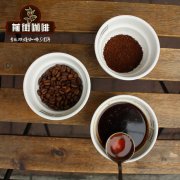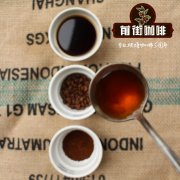FAQ certification-the flavor characteristics and treatment of AA coffee beans in Dogilimanjaro, Tanzania? Tan

Professional coffee knowledge exchange more coffee bean information please follow the coffee workshop (Wechat official account cafe_style)
FAQ certification-the flavor characteristics and treatment of AA coffee beans in Dogilimanjaro, Tanzania? How to process raw beans in Tanzania?
Kilimanjaro coffee is grown on the volcanic slope of the highest peak in northeastern Tanzania, the African continent, showing a distinctive flavor, with a lovely body and bright acidity, making it one of the best coffee in Africa. Kilimanjaro, the highest mountain producing area in Africa, can be regarded as a masterpiece of Tanzanian coffee, and most coffee beans are still washed at a high cost. The coffee-growing areas of Tanzania are located in the north, south and west, but the best quality and taste is the Kilimanjaro Kilimanjaro Mazaro volcano in the north. Kilimanjaro volcano is the highest mountain in Africa at an altitude of 5896 meters and the equator is adjacent to the top of the mountain covered with snow all the year round. In general, Tanzania AA-- Kilimanjaro volcanic beans due to volcanic soil, geographical environment and high altitude temperature differences make the Kilimanjaro volcanic beans flavor with lemon, fruit and long-lasting aroma, of course, different baking degrees produce different taste.
Multi-door Tanzania series Kilimanjaro AA grows at the foot of Mount Kilimanjaro, the highest peak in Africa, and is rich in organic matter. Some coffee trees planted here even have a history of more than 100 years. Coffee farmers use traditional manual harvesting, with stable quality and softer and milder characteristics than Kenyan coffee, so it has been a favorite of the Japanese for many years.
Coffee harvesting and processing of Kilimanjaro:
If properly taken care of, Mount Kilimanjaro is clearly one of the best coffees on earth. With Kilimanjaro Coffee, however, compared to Kenyan coffee, there is more concern about the right harvest and processing of coffee beans. The problem is that the Kilimanjaro region lacks coffee-related infrastructure, which is not as advanced as Kenya.
A deeper problem is that Kilimanjaro coffee farmers lack attention to coffee beans throughout the coffee bean stage.
Therefore, although it is not difficult to find and buy Kilimanjaro coffee, it is still difficult to find real Kilimanjaro coffee. It is hoped that this situation will improve in the future because coffee beans in the area are better taken care of.
At present, coffee growers have only the incentive to separate and sell peaberry beans from the region, which has received high prices. Farmers of the coffee usually care little about how the beans are treated.
Buy Kilimanjaro coffee:
When looking for high-quality Tanzanian Kilimanjaro coffee, it is best to find an original Kilimanjaro coffee that provides high-quality care records during the harvest and processing of coffee beans. and everything from aging to the transportation of beans to the arrival of goods in the mailbox.
Coffee has a long chain of custody-it takes many steps and many people's hands to reach you-and there are many things that can go wrong that can contaminate the quality of coffee beans and breed their taste and aroma. The resulting roasted, ground and brewed coffee.
Kilimanjaro coffee politics:
Coffee politics in Kilimanjaro is still fragile. A bit of history: in 2005, for example, Peet's Coffee&Tea launched Kilimanjaro in Tanzania, buying coffee from 839 small-scale growers who were able to sell directly to gourmet coffee roasters and bypass national coffee auctions for the second year in a row.
In 2000, Peet's began working with the Kilimanjaro Special Coffee Growers Association (KILICAFE), which had grown to include more than 8000 small-scale farmers by 2005.
Flavor description: the entire coffee growing area is adjacent to Kenya, so the taste of coffee beans is similar to that of Kenyan AA. Black plum, plum, the overall flavor is balanced and the acid is more supple.
Kilimanjaro Native Cooperative:
The Kilimanjaro Native Cooperation Alliance (KNCU) is the oldest cooperative in Africa, and coffee is their most important cash crop. They grow large amounts of volcanic soil from Mount Kilimanjaro and produce wet-processed (washed) Arabica coffee. The coffee tree is often pruned with bananas.
More than 150000 small farmers from nearly 100 rural societies provided KNCU with about 5300 tons of Arabica coffee. This coffee accounts for about 60% of the coffee in the region, but it is different from competitive markets and private trade agreements.
KNCU is registered as a Fairtrade supplier and exports some coffee beans to Fairtrade coffee. Coffee collected and traded by KNCU accounts for about 11% of the country's total coffee production. KNCU also supports employees to provide organic coffee development, training and inspection, work with farmers to improve quality and yield, while helping the environment and farmers to achieve higher profits.
The program selected more than 2000 small Kilimanjaro coffee farmers, including Moshi coffee farmers and mountain hominids, who are known as Wachagga and speak Bantu. They are the third largest ethnic group in Tanzania.
Wachagga lives mainly on the eastern and southern slopes of Mount Kilimanjaro as well as Mount Meru and Mohi areas. They have been successfully using a wide range of irrigation systems, fertilization and other agricultural methods for more than a thousand years.
The fertile soil, ample rainfall and mild climate in Mount Kilimanjaro provide the best conditions for many small coffee farms in the region, known as shambas, where coffee is often intertwined with bananas.
High-quality organic farmers in the area help protect the fertility of the volcanic soil while maintaining shaded trees. As a result of the elimination of intensive chemical agriculture, coffee farmers have made higher profits and reduced health risks.
The KNCU project is carried out in cooperation with the Association for the Promotion of the Export of Organic products in Africa (EPOPA) established by the Swedish International Development Cooperation Agency (SIDA) in 1994.
Country: Tanzania
Product name: Duomengilimanjaro AA
Producing area: Kilimanjaro Farm
Grade: AA
Treatment: washing
Variety: Arabica
Qianjie coffee is recommended for brewing:
Filter cup: Hario V60
Water temperature: 90 degrees
Degree of grinding: small Fuji degree of grinding 4
Cooking methods: the ratio of water to powder is 1:15, 15g powder, the first injection of 25g water, 25 s steaming, the second injection to 120g water cut off, waiting for the powder bed water to half and then water injection, slow water injection until 225g water, extraction time about 2:00
Analysis: using three-stage brewing to clarify the flavor of the front, middle and back of the coffee. Because V60 has many ribs and the drainage speed is fast, it can prolong the extraction time when the water is cut off.
Important Notice :
前街咖啡 FrontStreet Coffee has moved to new addredd:
FrontStreet Coffee Address: 315,Donghua East Road,GuangZhou
Tel:020 38364473
- Prev

Growing environment and history of AA coffee beans, a small farmer in Mbeya town, Shiviwaka producing area, Tanzania? Front street
Professional coffee knowledge exchange more coffee bean information please pay attention to the coffee workshop (Wechat official account cafe_style) Tanzania Shiviwaka producing area Mbeya small farmer AA coffee bean growing environment and history? How to brew Tanzanian coffee in Qianjie? Shiviwaka is the Swahili language of the Tanzania Coffee Farmers' Association registered as a farmer's own non-governmental organization in 2009.
- Next

What is the growing environment of coffee beans in East Timor? How many kinds of coffee are there in East Timor?
Professional coffee knowledge exchange more coffee bean information please follow the coffee workshop (Wechat official account cafe_style) how is the growing environment of coffee beans in East Timor? How many kinds of coffee are there in East Timor? In 1994, after years of conflict, the coffee industry in East Timor began to emerge. With the help of NCBA and USAID, coffee farmers formed the cooperative CooperativaCafTimor
Related
- Detailed explanation of Jadeite planting Land in Panamanian Jadeite Manor introduction to the grading system of Jadeite competitive bidding, Red bid, Green bid and Rose Summer
- Story of Coffee planting in Brenka region of Costa Rica Stonehenge Manor anaerobic heavy honey treatment of flavor mouth
- What's on the barrel of Blue Mountain Coffee beans?
- Can American coffee also pull flowers? How to use hot American style to pull out a good-looking pattern?
- Can you make a cold extract with coffee beans? What is the right proportion for cold-extracted coffee formula?
- Indonesian PWN Gold Mandrine Coffee Origin Features Flavor How to Chong? Mandolin coffee is American.
- A brief introduction to the flavor characteristics of Brazilian yellow bourbon coffee beans
- What is the effect of different water quality on the flavor of cold-extracted coffee? What kind of water is best for brewing coffee?
- Why do you think of Rose Summer whenever you mention Panamanian coffee?
- Introduction to the characteristics of authentic blue mountain coffee bean producing areas? What is the CIB Coffee Authority in Jamaica?

